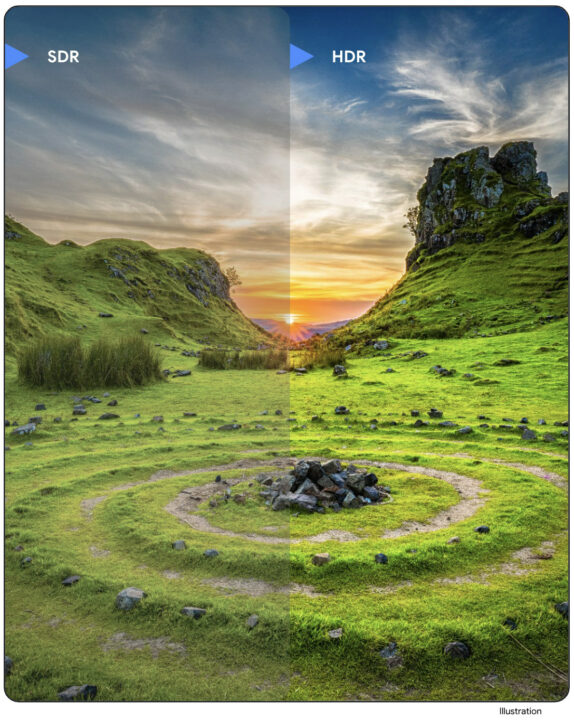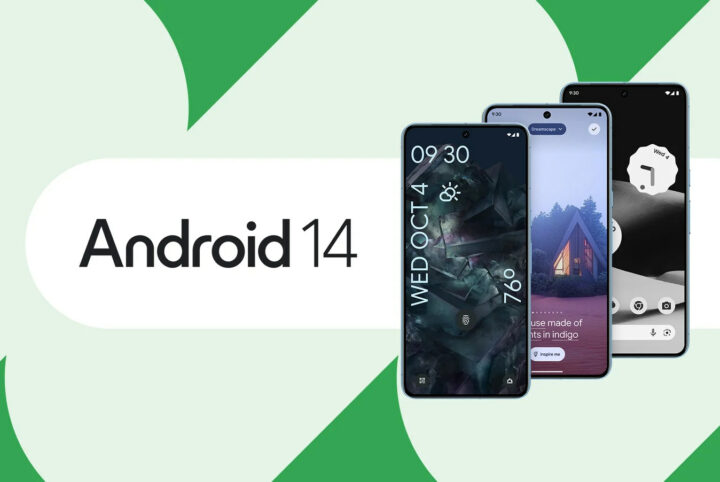Google has just released Android 14 for supported devices such as Google Pixel phones and pushed the source code to AOSP (the Android Open-Source Project).
Most of the changes to the fourteenth version of the Android operating system were introduced with the first Android 14 developer preview – released in February 2023 – which included performance improvements, better privacy and security, and additional user-side customization options.
Some of the new features unveiled since the first Android 14 developer preview include:
- AI-generated wallpapers using text-to-image diffusion models to help users easily create unique wallpapers
- HDR images with Ultra HDR (Android 13 already supported HDR videos)
- Built-in Health Connect support to let people track their fitness, health, and wellness levels across apps in a secure way respecting privacy.
- Android 14 encourages users to set a six-digit PIN (or longer) to improve security.
- Improved accessibility with vision-and hearing-inclusive features such as an enhanced magnifier, the ability to change the font size on the fly with Quick Settings, and better support for hearing aids
- Lossless USB audio support
- Ability to use an Android smartphone as a webcam (on a limited number of models for now) – See the video embedded below
- Pixel-only features (aka Pixel Features Drop) – New camera interface, RAW image viewing and editing, dual screen interpreter mode, etc…

Under the hood, performance improvements were made possible by freezing cached apps and optimizing broadcasts (to wake-up apps), which also led to shorter app starting times. ART optimizations in Android reduce code size by an average of 9.3% without impacting performance.
Android 14 has also gotten better with tablets and foldable form factors including a taskbar supporting enhanced multitasking, large-screen optimized system apps and notification UI, activity embedding, enhanced letterboxing, improved media projection, and more
Android 14 has started to roll out to supported Pixel devices (Pixel 6 and newer, Pixel Tablet, and Pixel Fold) and will soon become available on third-party phones from Samsung, iQOO, Nothing, OnePlus, Oppo, Realme, Sharp, Sony, Tecno, Vivo, and Xiaomi.
You should be able to retrieve the Android 14 source code from AOSP with the following command:
|
1 2 |
~/bin/repo init -u https://android.googlesource.com/platform/manifest -b android-14.0.0_r2 ~/bin/repo sync |
Additional details can be found on Google’s official announcement, Android Developer Blog, and the developer website.

Jean-Luc started CNX Software in 2010 as a part-time endeavor, before quitting his job as a software engineering manager, and starting to write daily news, and reviews full time later in 2011.
Support CNX Software! Donate via cryptocurrencies, become a Patron on Patreon, or purchase goods on Amazon or Aliexpress







Once upon a time anew version of Android was a real event.
Now it’s more like last year with a new coat of paint.
Android 14 already boots on reference boards: Qualcomm Robotics Board RB5, Qualcomm Dragonboard 845c (DB845c, aka RB3) and HiSilicon Hikey960.
https://www.linaro.org/blog/android-14-now-available-on-linaro-reference-boards-in-aosp/
[ repo sync, repository checkout and building Android14
seems being a 250GB&150GB storage space and 64GB RAM, Ubuntu >=18.04, requirement, now for version 14 (~45-60GB ~10yrs ago)
‘https://source.android.com/docs/setup/start/requirements’ ]